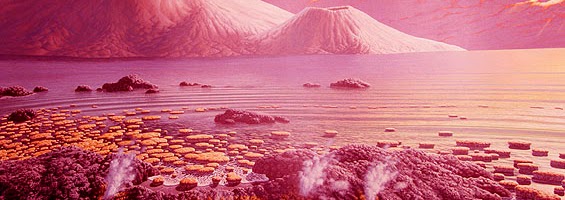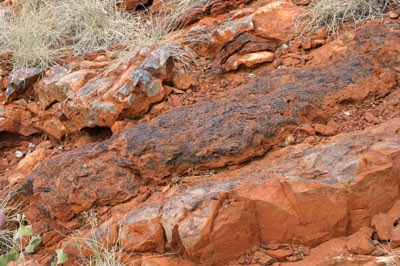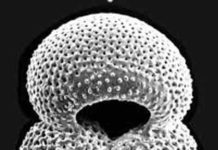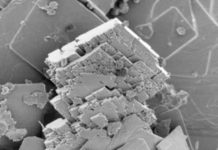
A new study has revealed details about the composition of Earth’s atmosphere during the Archean eon, which lasted from around 4 billion years ago to 2.4 billion years ago.
Astrobiologists study the Archean in order to better understand the early evolution of life on Earth, and how organisms survived in an environment that was much different than the planet today. Studying the Archean Earth can also provide clues about life’s potential beyond our planet.
“The Archean Earth is the most habitable planet for which we have data, so studying it is one of the best ways we have of studying alien planets,” said Shawn Domagal-Goldman of NASA’s Goddard Space Flight Center, and co-author on the paper.
Piecing Together the Past
Much of what we know about the Archean environment comes from the geologic record. The oldest known sedimentary rocks on Earth originate from the Archean, and by studying the composition of ancient rocks, astrobiologists are able to piece together the environmental conditions that were present on Earth when the rocks were formed. Before now, they thought the Archean atmosphere contained little to no oxygen, but were much more uncertain about other aspects of the atmosphere. The new study delves deeper into the question of what the Archean environment was like by looking at the amounts of other components in Archean rocks – namely sulfur.

Rocks from the Archean contain sulfur compounds, and the sulfur contained in these compounds was deposited from the atmosphere. The types and quantity of sulfur-containing compounds, and the amount of different sulfur isotopes they contain, is a strongly related to atmospheric composition.
Over the years, geologists have made tremendous progress in measuring this isotopic signal in the rock record to help explain conditions in the ancient atmosphere. However, until now, models were incapable of simulating this process with a high degree of precision, and this limited the ability to accurately interpret these records.
This led to a new methodology that could provide greater details about the chemistry of the Archean atmosphere beyond the lack of oxygen. Importantly, this method provides a starting point for additional research on the problem, and could lead to further laboratory studies that will help place constraints on the exact makeup of Earth’s ancient atmosphere.
A New Look at Old Sulfur
In a study supported by the NASA Astrobiology Institute (NAI), scientists describe this new model for the formation of sulfur isotopes in the laboratory (specifically the isotopes known as Δ33S and Δ36S). They used the model to study how these isotopes could have been formed, and the quantity that resulted from each of the formation methods. The levels of isotopes from each method were then compared to the deposition of sulfur seen today in the geologic record.
In simple terms, the team tried to connect the way sulfur isotopes were formed with the sulfur signal that now exists in rocks from the Archean.
The results show that there are problems with previously-proposed pathways for sulfur isotope formation, because the numbers just don’t match up. The model’s predictions of sulfur and isotope content in the rocks result in significant disagreements with what is observed in the ancient rocks. This could be resolved by further laboratory work that will improve the inputs to the models, or by new theories on how biology acted on the sulfur after it left the atmosphere but before it was preserved in rocks.
“The model development done by Mark Claire [lead author] for this paper will significantly improve our ability to predict, and eventually understand, the sulfur isotope record of ancient Earth,” explained Domagal-Goldman.
More information:
Mark W. Claire, James F. Kasting, Shawn D. Domagal-Goldman, Eva E. Stüeken, Roger Buick, Victoria S. Meadows, “Modeling the signature of sulfur mass-independent fractionation produced in the Archean atmosphere,” Geochimica et Cosmochimica Acta, Volume 141, 15 September 2014, Pages 365-380, ISSN 0016-7037, dx.doi.org/10.1016/j.gca.2014.06.032.
Note : The above story is based on materials provided by Astrobio.net
This story is republished courtesy of NASA’s Astrobiology Magazine.










